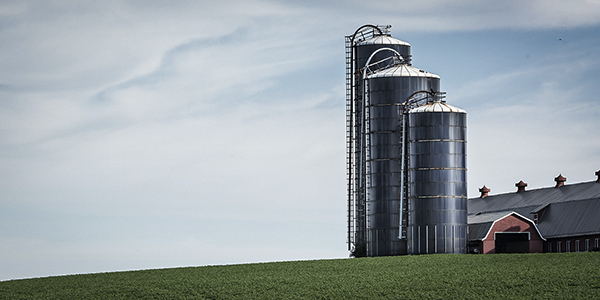AGRONOMICSUPPORT
YOU CAN TAKETO THE FIELD
Hidden Dangers of Silo Gas
It’s that time of year when harvest begins around the country. Harvest can be a dangerous season, and unfortunately every year lives are lost in farm-related accidents. One of the potentially deadly situations that exists on the farm is silo gas from a newly filled silo.
Silo Gas
Silo gas is a byproduct of the fermentation process when newly chopped silage is placed in an enclosed silo. There are a variety of gases created during the fermentation process, and the most common gases formed during this process are nitrogen dioxide and carbon dioxide. However, each storage facility is different so it's critical that you know what kind you're working with. For example, in sealed silos, carbon dioxide is the most prevalent gas. This is good for maintaining high quality forage, but it can also be very deadly. Carbon dioxide, which is an odorless and colorless gas, will displace the oxygen in the silo. When this happens, someone who enters the silo can succumb to the lack of oxygen with very little warning.
Nitrogen Dioxide
Nitrogen dioxide is the most common gas found in conventional or open-top silos. Nitrogen dioxide gas can be detected by the bleach-like odors and yellow to reddish-brown fumes. Nitrogen dioxide is dangerous because it can cause severe irritation to the nose and throat, and an inflammation of the lungs. At low levels of exposure, many farmers only experience mild pain or discomfort, but may die in their sleep several hours later because of fluid build-up in their lungs. Many other victims can relapse several weeks later with pneumonia-like symptoms. That is why it is critical to seek medical attention immediately after exposure to nitrous oxide, even if it was a short exposure.
Nitrogen dioxide, unlike carbon dioxide, is formed relatively soon after ensiling. It generally reaches its peak about three days after harvest and begins to rapidly decline after that. Nitrogen dioxide is formed during that fermentation period when nitrous acid is converted to nitric oxide and then to nitrous oxide. After about two weeks, the nitrogen dioxide is usually done forming. However, it can remain a threat for long after harvest if it is not given the opportunity to escape from the silo.
Both carbon dioxide and nitrogen dioxide are heavier than air. As they are produced, they will tend to settle on top of the silage or other low-lying areas. These gases can also flow down silage chutes and gather in feed rooms, barns, under feed bunks, etc. It is important to make sure that these areas are properly ventilated. Livestock can also fall victim to the harmful effects of these gases.
Farmers should avoid entering silos unless absolutely necessary. If they must enter a silo, it is critical that the silo has had proper time to ventilate prior to entering. If someone that you know has become overcome by silo gases, it is important to call medical help immediately. Do not try to enter a silo to rescue someone, because the likelihood of becoming a victim as well is greatly enhanced.
Farm Safety is critical this time of year. Thank you for taking the time to read this important information and remember: stay safe, stay out!
*This agronomy blog is dedicated to the farmers, their families, and the rescue workers who have lost their lives in silo accidents.
Source:
National Ag Safety Database: Silo Gas Dangers www.nasdonline.org






Technical Team Agronomist